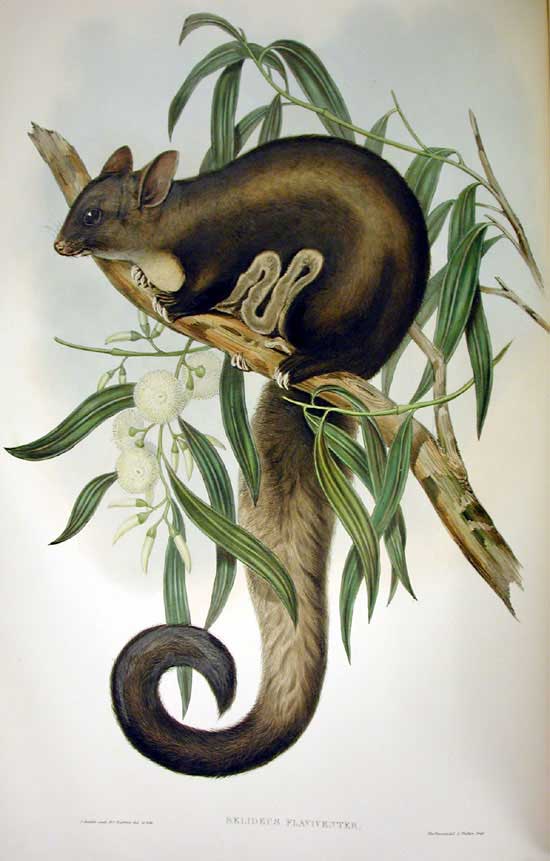Facts About Yellow-bellied glider
The yellow-bellied glider, also known as the fluffy glider, is a captivating nocturnal marsupial native to the eucalypt forests of eastern Australia. These nimble gliders inhabit regions from northern Queensland down to Victoria, residing in forests and woodlands at elevations ranging from sea level up to 1,400 meters. In northern Queensland alone, there are three distinct populations totaling around 6,000 individuals.
Comparable in size to a rabbit, the yellow-bellied glider is distinguished by its grey-brown fur on the back and a belly that varies from off-white to a vivid orange or yellow. Males typically exceed females in size. As the largest species of the genus Petaurus, these gliders are capable of gliding distances of up to an impressive 150 meters. They are social animals, spending their daylight hours nestled in tree hollows lined with leaves, often shared with family members. While breeding primarily occurs in the spring in southern regions, it can take place year-round in northern Queensland.
Their diet is diverse, consisting of nectar, honeydew, insects, pollen, and notably tree sap, which they adeptly harvest by cutting into the bark to induce sap flow. However, the yellow-bellied glider faces significant threats due to habitat loss and fragmentation, largely driven by timber harvesting and agriculture. Once classified as "Least Concern" their conservation status has been updated to "Near Threatened" following a 30% population decline over three generations.
